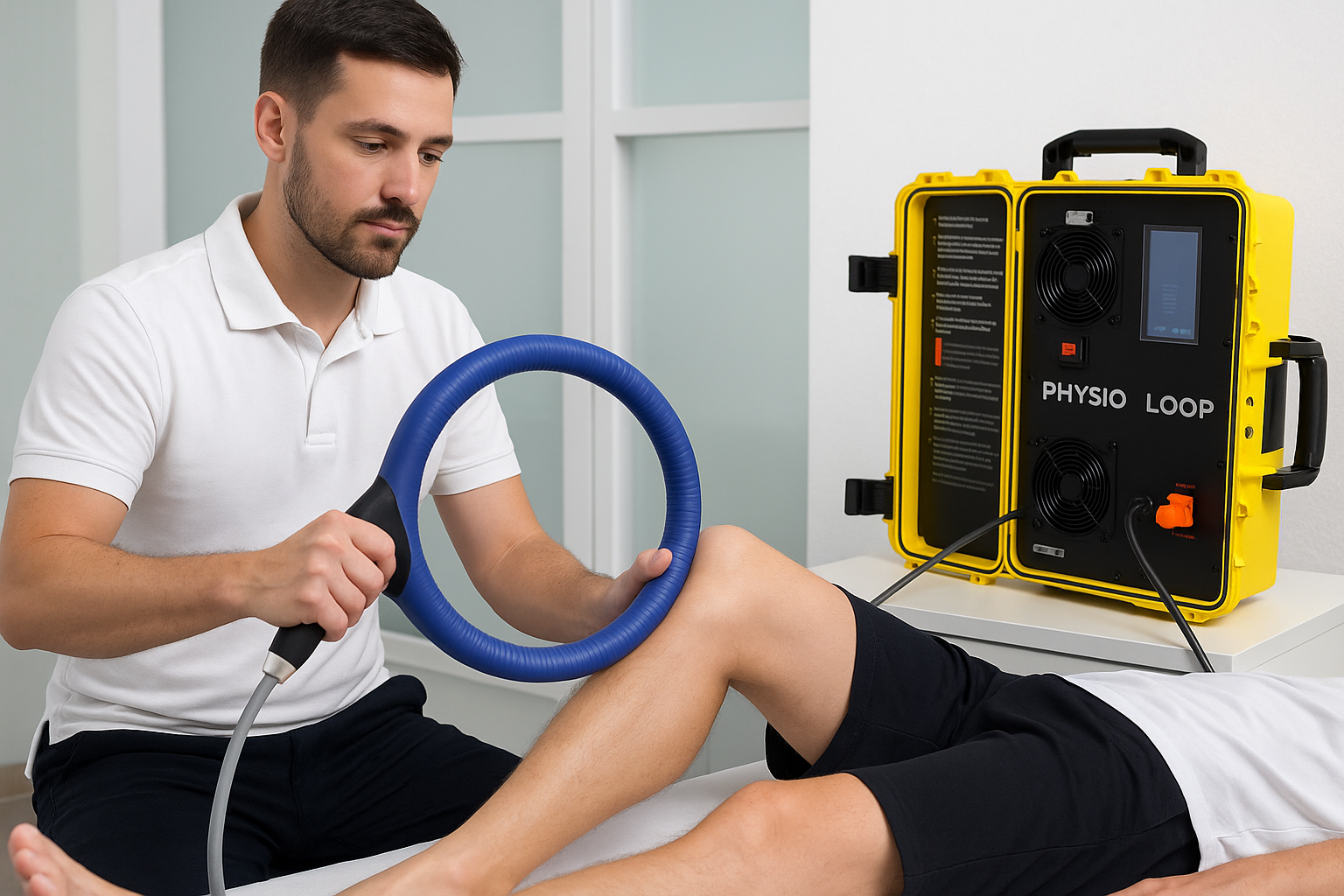Living with chronic pain or struggling to recover from an injury can be exhausting, frustrating, and even discouraging. Many patients turn to painkillers, invasive surgeries, or temporary fixes that fail to provide lasting results. The constant cycle of discomfort limits mobility, decreases productivity, and often lowers quality of life. For athletes, it can mean lost training time, while for patients, it may mean struggling with daily activities.
Magnetic therapy offers a non-invasive, drug-free alternative that uses electromagnetic fields to stimulate healing, reduce inflammation, and relieve chronic pain. With proven benefits in sports medicine, physiotherapy, and rehabilitation clinics, this therapy is rapidly becoming a trusted method for both patients and medical professionals.
If you’ve been searching for a safer and more effective approach to chronic pain management or injury recovery, magnetic therapy could be the breakthrough solution worth considering.
What Is Magnetic Therapy and How Does It Work?
Magnetic therapy is a non-invasive treatment that uses pulsed electromagnetic fields (PEMF) or static magnets to stimulate the body’s natural healing processes. When applied to targeted areas, electromagnetic energy penetrates tissues, improving blood circulation, oxygen delivery, and cellular regeneration. This promotes faster healing of muscles, tendons, and ligaments while reducing inflammation and discomfort.
Unlike medication or invasive procedures, magnetic therapy targets the root cause of pain by restoring balance at a cellular level. It is widely used in physiotherapy treatments, sports rehabilitation, and wellness clinics for its ability to enhance recovery and support long-term musculoskeletal health.
Why Should Patients and Professionals Consider Magnetic Therapy?
Patients and rehabilitation specialists value magnetic therapy for its ability to deliver consistent results without side effects. It is highly effective for conditions such as arthritis, back pain, joint injuries, tendonitis, and post-surgical recovery. Athletes benefit from faster healing times, while medical professionals appreciate its versatility and safety.
This therapy offers an excellent complement to physiotherapy treatments, chiropractic care, and sports medicine practices, making it one of the most versatile and practical solutions for pain management.
Key Questions About Magnetic Therapy
What conditions can magnetic therapy treat?
It is commonly used for arthritis, back pain, joint injuries, tendonitis, muscle strains, and post-surgical rehabilitation.
Is magnetic therapy painful?
No, magnetic therapy is completely painless. Patients usually feel gentle warmth or tingling as circulation improves.
How many sessions are typically required?
Treatment frequency varies, but most patients experience noticeable improvements after 5 to 10 sessions.
Are there any side effects?
Magnetic therapy is considered safe and non-invasive. Rarely, some patients may experience temporary mild dizziness or fatigue, which usually resolves quickly.
Who should avoid this therapy?
It is not recommended for individuals with pacemakers, severe heart conditions, or pregnant women.
Contents
Clinical Benefits and Applications
Magnetic therapy offers a wide range of clinical applications across physiotherapy, rehabilitation, and sports medicine:
| Clinical Application | Benefit |
|---|---|
| Arthritis | Reduces joint inflammation and stiffness |
| Back Pain | Relieves chronic and acute pain naturally |
| Tendonitis | Accelerates tendon healing |
| Muscle Strains | Improves oxygen flow and tissue repair |
| Sports Injuries | Shortens recovery times |
| Post-Surgery Recovery | Enhances circulation and reduces swelling |
Magnetic therapy’s versatility makes it valuable for both everyday patients and professional athletes.
Comparison With Other Pain Relief Methods
When compared with conventional treatment options, magnetic therapy demonstrates unique advantages:
| Treatment Type | Invasiveness | Side Effects | Recovery Effectiveness |
|---|---|---|---|
| Magnetic Therapy | Non-invasive | None/minimal | High |
| Surgery | Invasive | Moderate to severe risks | High, but with long downtime |
| Pain Medication | Non-invasive | Dependency & side effects | Short-term relief only |
| Steroid Injections | Minimally invasive | Possible tissue damage | Temporary relief |
This comparison highlights why more clinics are adopting electromagnetic therapy machines as part of their treatment protocols.
Conclusion
Magnetic therapy is proving to be a safe, effective, and innovative solution for patients suffering from chronic pain, sports injuries, and musculoskeletal disorders. Its non-invasive nature, combined with consistent clinical results, makes it a preferred option for physiotherapists, sports medicine specialists, and rehabilitation professionals.
If you are ready to experience advanced non-invasive recovery methods, explore our premium Magnetic Therapy Machines designed for both clinics and personal use.




